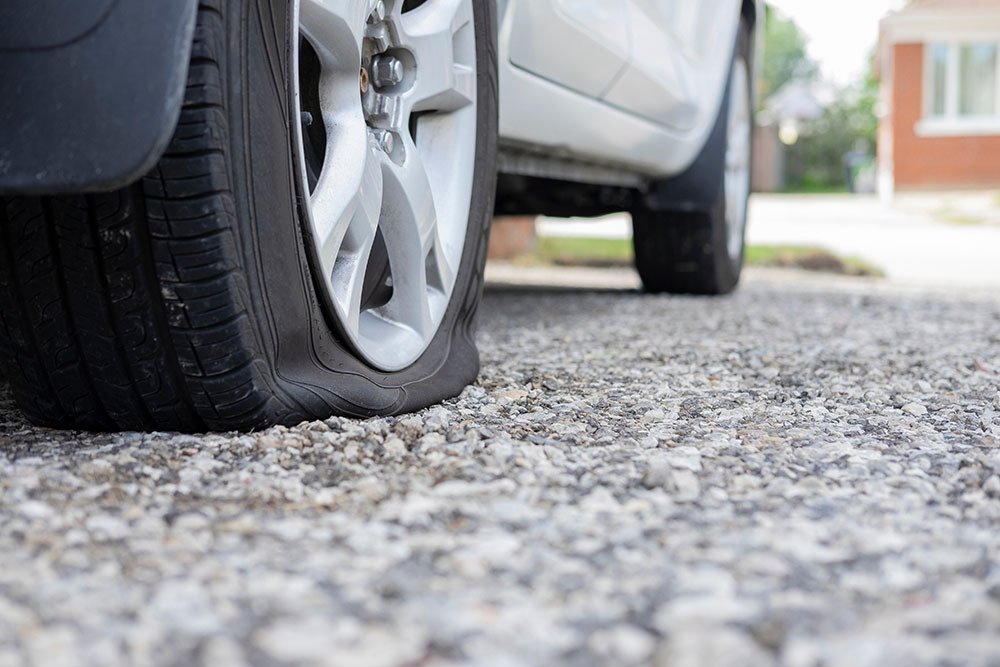Flat tires are one of the most common car problems drivers face. Whether you’re dealing with a slow leak, a nail in your tire, or a completely flat tire, knowing how to handle the situation can save you time, money, and stress. In this comprehensive guide, we’ll answer all your burning questions about flat tires, including when to change a tire, whether you can drive on a flat, and how to prevent tire issues in the future.
Can I Drive on a Flat Tire?
Driving on a flat tire is extremely dangerous and should be avoided at all costs. A flat tire compromises your vehicle’s stability, steering, and braking, increasing the risk of an accident. Additionally, driving on a flat can cause irreversible damage to the tire, wheel rim, and even your car’s suspension. If you experience a flat tire, pull over to a safe location and call for roadside assistance or replace the tire with a spare.
When to Change a Tire?
Knowing when to change a tire is crucial for your safety on the road. Here are some signs it’s time to replace your tire:
- Tread Wear: If the tread depth is below 2/32 of an inch (or the wear bars are visible), it’s time for a new tire.
- Cracks or Bulges: Visible damage to the tire’s sidewall can lead to a blowout.
- Frequent Air Loss: If your tire keeps losing air despite repairs, it may need replacement.
- Age: Tires older than 6–10 years should be replaced, even if they appear to be in good condition.
Can I Leave a Flat Tire Overnight?
Leaving a flat tire overnight is generally not recommended. Prolonged pressure on a flat tire can damage the sidewall and make it unusable. If you must leave it overnight, try to elevate the car using a jack to take the weight off the flat tire. However, it’s best to address the issue as soon as possible to avoid further damage.
Can I Drive on a Low Tire?
Driving on a low tire is risky and can lead to a blowout, reduced fuel efficiency, and uneven tire wear. If your tire pressure is significantly low, pull over and inflate the tire to the recommended PSI (found in your owner’s manual or on the driver’s side door jamb). If you don’t have access to an air pump, drive cautiously to the nearest gas station or call for assistance.
Can I Drive with a Nail in My Tire?
Driving with a nail in your tire depends on the severity of the leak. If the tire is holding air and the nail is securely lodged, you may be able to drive carefully to a repair shop. However, if the tire is losing air rapidly, it’s unsafe to drive. In such cases, replace the tire with a spare or seek professional help immediately.
Can I Leave a Run-Flat Tire Overnight?
Run-flat tires are designed to support the weight of your vehicle even after a puncture, allowing you to drive for a limited distance (usually up to 50 miles). However, leaving a run-flat tire overnight is not advisable. While it may hold up better than a standard flat tire, prolonged use can still cause damage. Have it inspected and repaired or replaced as soon as possible.
Can I Drive 9 Minutes on a Flat Tire?
Even driving for a short distance, like 9 minutes, on a flat tire can cause significant damage to the tire, wheel rim, and suspension. It’s always safer to pull over immediately and address the issue rather than risking further harm to your vehicle.
Can I Just Put Air in a Flat Tire?
Putting air in a flat tire is only a temporary solution if the tire has a slow leak. However, if the tire is completely flat, simply adding air won’t solve the problem. You’ll need to identify the cause of the flat (e.g., puncture, valve stem issue) and repair or replace the tire accordingly.
Do Flat Tires Wear Faster?
Flat tires don’t “wear” faster because they’re not designed to be driven on. However, driving on a flat tire, even for a short distance, can cause severe damage to the tire’s structure, making it unusable. Always avoid driving on a flat to prevent unnecessary wear and tear.
Do Tires Naturally Go Flat?
Tires can lose air over time due to natural permeation, but this process is very slow (about 1–2 PSI per month). If your tires are going flat frequently, it’s likely due to a puncture, damaged valve stem, or a problem with the wheel rim. Regular tire maintenance can help you identify and address these issues early.
Do Tires Lose Air Overnight?
Tires shouldn’t lose a significant amount of air overnight. If you notice a sudden drop in tire pressure, it could indicate a leak or puncture. Inspect the tire for visible damage and have it repaired by a professional if necessary.
Conclusion
Flat tires can be inconvenient and stressful, but knowing how to handle them can make all the difference. From understanding when to change a tire to avoiding driving on a flat, these tips will help you stay safe and prolong the life of your tires. Regular maintenance, such as checking tire pressure and inspecting for damage, is key to preventing flat tires and ensuring a smooth driving experience.

